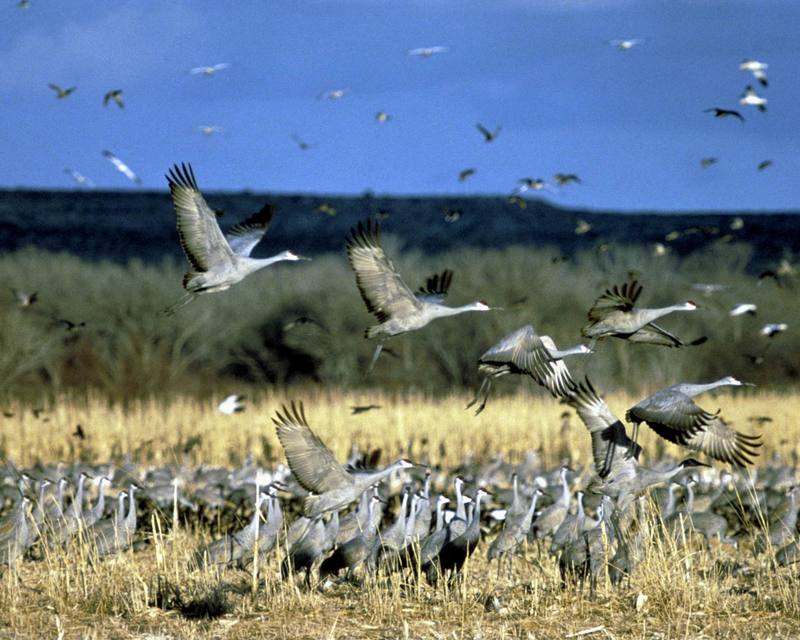From the U.S. Fish and Wildlife Service's online digital media library.
Check http://images.fws.gov/ for higher quality version.
Metadata
Title: Lake Andes National Wildlife Refuge
Alternative Title: (none)
Creator: Zahm, Gary
Source: WV - 02451 - Refuge Centennial
Publisher: U. S. Fish and Wildlife Service
Contributor: NATIONAL CONSERVATION TRAINING CENTER-PUBLICATIONS AND TRAINING MATERIALS
Language: EN - ENGLISH
Rights: (public domain)
Audience: (general)
Subject: bird, birds, endangered species
Description
Abstract: Lake Andes NWR, Lake Andes, South Dakota: Sandhill cranes are a stunning sight as they rise from the prairie of Lake Andes Refuge. The lake for which the refuge is named is a typical prairie lake, dependent upon snowmelt and rainfall run-off. About every 20 years or so, it is dry. The wildlife vary according to the season and the precipitation cycle. In wet years, there is an abundance of white pelicans, tundra swans, and waterfowl of every description. In dry years, the upland birds--the ring-necked pheasants, wild turkeys, prairie chickens, and sharp-tailed grouse--take over. The refuge also hosts white-tailed and mule deer, herons, yellowlegs, sandpipers, badgers, coyotes, red foxes, raccoons, and a variety of songbirds. Bald eagles hunt and fish here, but their night roosts and nests are at the adjacent Karl Mundt refuge, closed to the public because the eagles' sensitivity to disturbance during nesting. However a road through that refuge offers ample opportunities for observing the eagles and other species found there.
Date
Available: December 16 2002
Issued: December 10 2002
Modified: May 10 2004 |

